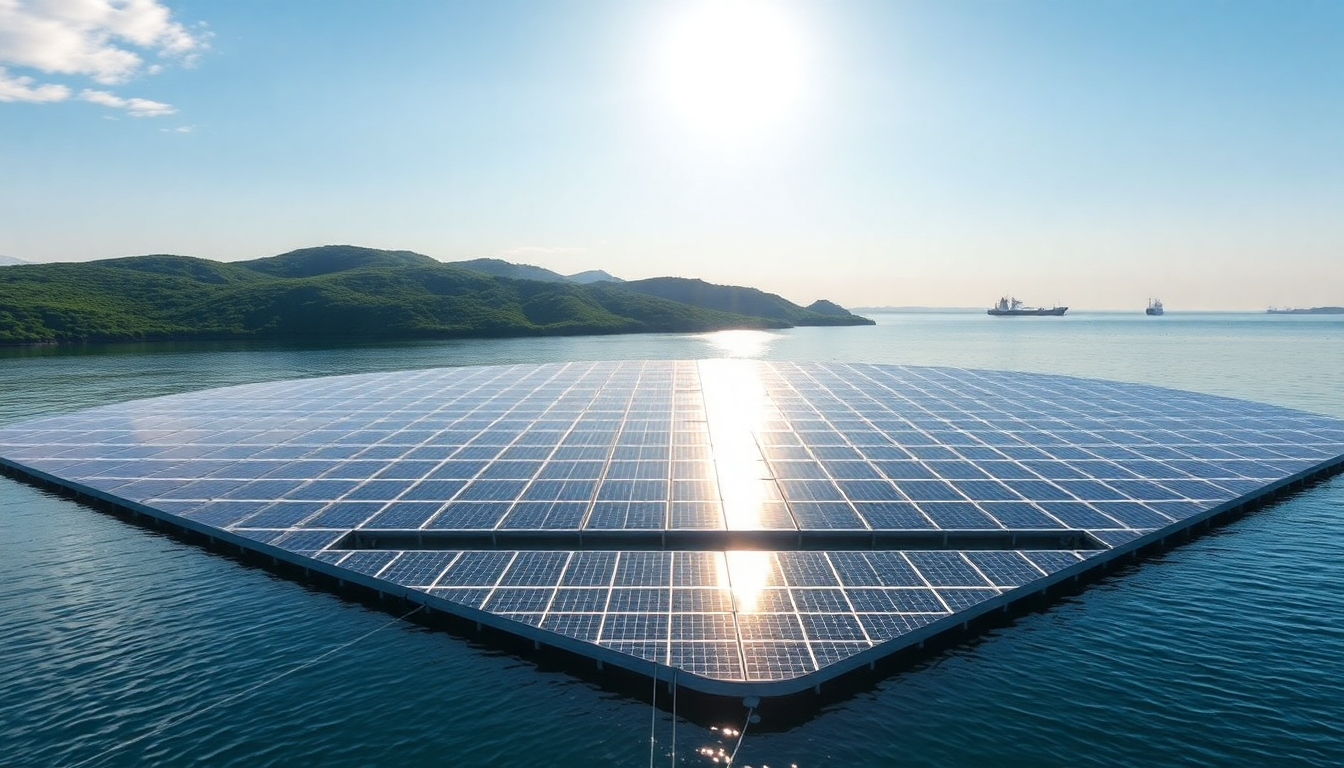Table of Contents
The recent launch of a floating solar station in Qingdao, Shandong province, is a game changer in the world of renewable energy. But what does this really mean for us? This innovative project not only boosts offshore power generation but also showcases a serious commitment to cutting down emissions. By tapping into the sun’s energy right from our coastal waters, this initiative is paving the way for a greener future and tackling the urgent challenge of climate change head-on.
Overview of the Floating Solar Initiative
So, what’s the deal with this floating solar station? It builds on an earlier offshore photovoltaic project that kicked off in late May. Together, these efforts represent the largest venture of its kind by Sinopec, a major state-owned enterprise in China. According to the State Council’s information portal, these two projects together are set to generate an astounding 16.7 million kilowatt-hours of electricity each year. That’s not just a number; it translates to a significant cut in carbon dioxide emissions, estimated to be around 14,000 tonnes annually. Can you imagine the impact?
This floating power station, crafted by Sinopec Qingdao Refining & Chemical, spans about 60,000 square meters and has an installed capacity of 7.5 megawatts. What’s really cool is that the solar panels can rise and fall with the tides, which means they’re perfectly positioned to capture as much energy as possible from the ocean’s surface. Being so close to the water enhances their efficiency, boosting energy output by 5 to 8 percent. Who knew solar could be so adaptable?
Benefits and Implications for Renewable Energy
The benefits of the Qingdao floating solar station go far beyond just churning out electricity. By merging solar technology with offshore environments, this project highlights the potential for innovative energy solutions that harmonize with marine ecosystems. The fact that these solar panels can adjust with the tides not only maximizes energy capture but also opens the door for exploring similar tech in coastal regions around the globe. Isn’t that fascinating?
With an impressive annual output of 16.7 million kilowatt-hours, this project stands as a key player in China’s renewable energy vision. As the nation works to shrink its carbon footprint and embrace greener options, the success of the Qingdao project could serve as a blueprint for future endeavors. And let’s not forget, focusing on sustainability like this can also spark economic growth by creating jobs and attracting investments in clean energy sectors. Sounds like a win-win, right?
Future Perspectives on Offshore Renewable Energy
Looking ahead, the floating solar project in Qingdao represents a major shift in how we think about renewable energy production. With the world facing the harsh realities of climate change, adopting innovative technologies that make the most of our natural resources is more important than ever. The growing interest in offshore solar installations could lead to a wave of similar projects popping up around the globe. Are we ready for that?
Moreover, as these technologies evolve and become more cost-effective, we can anticipate improvements in efficiency, storage solutions, and how they integrate with the energy grid. Successfully implementing offshore solar technologies won’t just help meet our energy needs; it will be crucial for reaching sustainability goals. With the Qingdao initiative leading the charge, the future of offshore renewable energy is looking brighter than ever. Who’s excited for what’s next?


